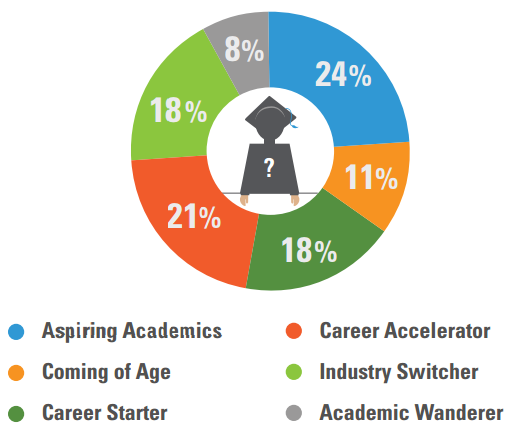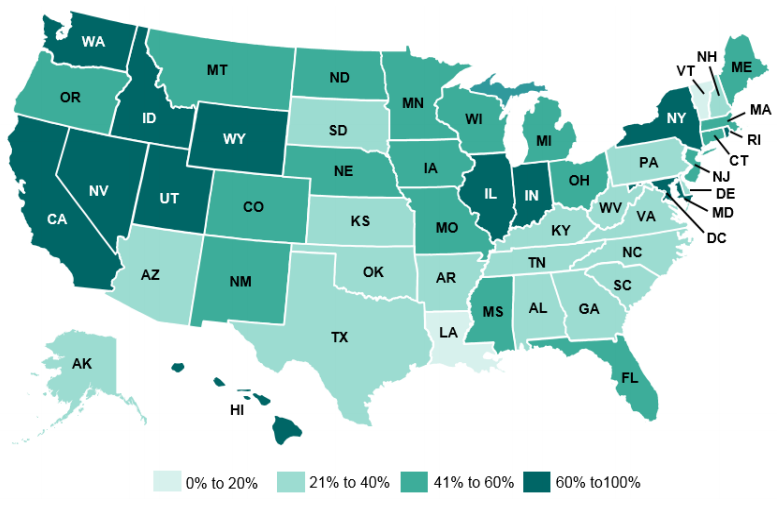Commentary
Degree Revocation
This month we had a question come in from a member regarding how best to address the issue of revoking a degree due to plagiarism found after the degree had been awarded. A brief search on the subject revealed that several institutions have documented policies on the topic either as a stand-alone policy and/or included in the student code of conduct. In addition, several AACRAO members were consulted on the issue, and their responses are paraphrased here. At one member institution, the adjudicating body that deals with academic misconduct would recommend the sanction of degree revocation to the decision-maker (initially the dean). The president has final authority at the appeal stage. Since the faculty at this institution votes on the graduates, the president might elect to take it to the faculty for a vote but could on his own approve such a sanction. The student has the option to appeal (at two stages), with the president being the ultimate decider. If approved (through the final appeal stage), the degree would be revoked. It was further suggested that an institution must address whether or not the student would be allowed to attempt to complete the degree by re-enrolling at some future date, be that immediately after the sanction or at some future date.
Others had not run across the situation at their own institution and so consulted others who said this situation occurs rarely (i.e., “once in the last 10 years”). Some of our members who responded had institutional policies themselves, while others had never run across the issue or applied a one-off practice to address the occurrence. If you’d like to comment on this issue, please email me, and I will add your comments to the website.
AACRAO Research and Occasional Partners
Occasionally AACRAO will endorse a partner in their survey initiative. Partners may include other associations or organizations engaged in research of interest to our membership and the higher education audience in general. Although we receive several requests for partnerships, we are highly selective about those we choose to engage. When we do partner, we may send the survey on behalf of the organization like we did for the American Council on Education with the 60-Second survey on the GED. On other occasions, we will provide a subset of our membership contact list to our partner and allow them to indicate that AACRAO is a research partner. For example, we, along with NACAC and NASFAA, have an opportunity to support Tyron Partners in their current research initiative funded by the Bill and Melinda Gates Foundation. Their study into the technology used to support internal and student-facing U.S. financial aid practices will be emailed to AACRAO’s primary contacts from a Tyron Partners email address in October. If you have any questions about this partnership or AACRAO research partnerships in general, please email Wendy Kilgore, AACRAO’s Director of Research.
Recent Inside Higher Ed Blog on the Importance of Market Segmentation in Higher Education
I found Clarkson University Associate Vice President of Marketing Tim Jones’ commentary on the importance of understanding marketing segmentation in his Inside Higher Ed blog interesting, as are the findings in the Parthenon Group study of more than 3,000 Americans enrolled in or considering enrolling in college to which he refers. Parthenon identifies six “distinct and defined segments based on their motivations and mindsets rather than just demographics” (Figure 1). Jones concludes his thoughts by stating that “Applying and refining the concept of motivation and mindset for other broad segments — alumni, donors, peers, funding agencies, parents — will spark new ideas for sophisticated marketing strategies. Considering what audiences want and why they want it can also help galvanize brand identity and open up opportunities for differentiation. Segmentation provides perspective on what it is that makes an institution unique that the market cares about.”
Figure 1: Six Major Student Segments

Source: The Parthenon Group http://cdn.ey.com/parthenon/pdf/perspectives/4.4.2-The-Differentiated-University-Part-I-1-disclaimer.pdf
AACRAO Research Insights
The September 2016 AACRAO 60-Second Survey focused on undergraduate and graduate class scheduling practices. Topics included: staffing level; primary responsibility for data entry; importance of various factors in the scheduling process; process timeline, availability of year-long registration; enrollment thresholds; the use of technology for class scheduling and student schedule planning; and the expected return on investment associated with the technology.
Key Findings for Undergraduate and Graduate Class Scheduling Practices
- More than half of all respondents reported that the registrar’s office has primary responsibility for entering the class data into the student information system regardless of student level.
- At the undergraduate level, nine in ten regard faculty availability as an “important” or “very important” factor in the undergraduate class scheduling process, followed by time block popularity and the class schedule from the previous year.
- At the graduate and/or professional level, nine in ten also regard faculty availability as an “important” or “very important” factor in the class-scheduling process, followed by student request/need and faculty preferences.
- While 40% report scheduling classes an academic term in advance, about a fifth schedule a full academic year in advance, and a further fifth report scheduling “less than one academic term in advance.”
- Just 6% of institutions in this sample let students register for a full academic year at once. An additional 18% allow students to view the full academic year schedule but not register.
- Half do not own a classroom/class scheduling solution.
- Almost two-thirds of institutions set a minimum class size threshold for a course to “run” compared to 8% who guarantee all courses will run regardless of enrollment.
Key Findings for Student Scheduling/Planning Technology
- There appears to be confusion in the field about the difference in technology used by a student to plan which courses he will take in future terms, compared to a degree audit system, and further differentiated from a student scheduling/planning solution. The latter was defined in this survey as the following: “Schedule planning solutions are used by students to create optimal class schedules by identifying preferred classes and blocking off unavailable time. The software instantly informs the student of all possible conflict-free schedule combinations available for immediate registration.”
- Twenty-eight percent of respondents reported their institution offers an online schedule planning tool for their students.
- About one-third of those who do not have a solution indicated that they seek to acquire one in the next 12 months.
- When asked about the expected return on investment for current owners, 90% of respondents hoped the schedule planning tool would improve the student experience, followed by improving timely student registration (68%) and improved time to degree (62%).
- While one-third of solution owners do not know the percentage of students using the product, almost one-quarter report a very high usage rate (80% or above).
Current Higher Education Research and Related Topics
Remedial Coursetaking at U.S. Public Two- and Four-Year Institutions
The National Center for Education Statistics (NCES) recently released a report on remedial coursetaking and its impact on postsecondary outcomes. NCES found that among those students who started in a postsecondary institution in 2003-04, 68% of those at two-year institutions and 40% of those at four-year institutions took at least one remedial course over a six-year timeframe. Not unexpectedly, students enrolled at two-year institutions were more likely to enroll in two or more remedial courses than those who enrolled at four-year institutions. They also found that remedial course completers “did as well if not better than students who did not take any remedial courses” in terms of transferring to a four-year institution, earning college-level English credit, and persisting through college. In addition, they found that “Not all remedial completers experienced favorable outcomes once various demographic, academic, enrollment, and contextual characteristics were controlled for in the multivariate analysis.”
Dual Credit – The Superintendent’s Perspective
Hobsons recently released a report on dual enrollment based on a survey in conjunction with the American Association of School Administrators. This executive summary report provides an insight into dual enrollment from the K-12 perspective. Insights from this report will be compared to similar questions in the AACRAO/Hobsons joint dual enrollment project.
A guide to developing and evaluating a college readiness screener
Two scholars from Florida State University developed a guide released by IES to help institutions identify college-ready students. The guide report then takes the reader through a step-by-step process that may be used to screen prospective students for college readiness.
Child Care for Parents in College: A State-by-State Assessment
The Institute for Women’s Policy Research released a briefing paper that examined the share of public institutions with campus childcare centers (Figure 2). The authors found that from 2005-2015, campus childcare declined in 36 states at both two- and four-year institutions. Among those states with 33 or more public institutions of higher education, four states were found to have campus childcare at 75 percent or more of their public institutions. While 39 states and the District of Columbia do not have work requirements for parents enrolled in education and/or training to qualify for the child subsidy, three states require at least 20 hours of work a week, and eight require less than 20 hours a week.
Figure 2: The Shares of Public Two- and Four-Year Institutions with Campus Child Care by State, 2015

Source: IWPR analysis of data from the U.S. Department of Education, National Center for Education Statistics. Integrated Postsecondary Education Data Systems (IPEDS). 2015 Institutional Characteristics Component (2015 Preliminary Release).
Student Diversity at More Than 4,600 Institutions
The Chronicle of Higher Education released a dataset of more than 4,600 undergraduate, graduate, and professional schools and their student enrollment. The tables provide information about each institution’s demographics and their minority populations.
New National Student Clearinghouse Report on Time to Degree
The just-released report highlights the time to degree completion for a cohort of students who earned their associate’s or bachelor’s degree between July 1, 2014 and June 30, 2015. “Overall, the average time enrolled for associate and bachelor’s degree earners was 3.3 years and 5.1 years, respectively. However, as the report shows, the time required for successful degree attainment could be influenced by the pathway the student followed as well as by factors, such as stop outs and less than full-time enrollment status.”